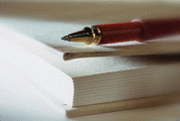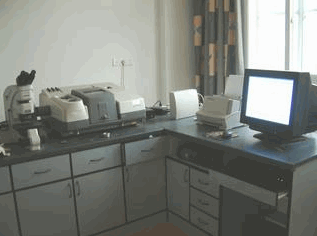红外
光谱手册(The Sadtler Handbook of Infrared Spectra)(英文版) .
General Uses
* Identification of all types of organic and many types of inorganic compounds
* Determination of functional groups in organic materials
* Determination of the molecular composition of surfaces
* Identification of chromatographic effluents
* Quantitative determination of compounds in mixtures
* Nondestructive method
* Determination of molecular conformation (structural isomers) and stereochemistry (geometri-
cal isomers)
* Determination of molecular orientation (polymers and solutions)
Common Applications
* Identification of compounds by matching spectrum of unknown compound with reference
spectrum (fingerprinting)
* Identification of functional groups in unknown substances
* Identification of reaction components and kinetic studies of reactions
* Identification of molecular orientation in polymer films
* Detection of molecular impurities or additives present in amounts of 1% and in some cases as
low as 0.01%
* Identification of polymers, plastics, and resins
* Analysis of formulations such as insecticides and copolymers
Samples
State
Almost any solid, liquid or gas sample can be analyzed. Many sampling accessories are available.
Amount
Solids 50 to 200 mg is desirable, but 10 μg ground with transparent matrix (such as KBr) is the mini-
mum for qualitative determinations; 1 to 10 μg minimum is required if solid is soluble in suitable sol-
vent.
Liquids 0.5 μL is needed if neat, less if pure.
Gases 50 ppb is needed.
Preparation
Little or no preparation is required; may have to grind solid into KBr matrix or dissolve sample in a
suitable solvent (CCl4 and CS2 are preferred). Many types of sample holders and cells are available.
Water should be removed from sample if possible.
Analysis Time
Estimated time to obtain spectrum from a routine sample varies from 1 to 10 min depending on the type
of instrument and the resolution required. Most samples can be prepared for infrared (IR) analysis in
approximately 1 to 5 min.
Limitations
General
* Minimal elemental information is given for most samples.
* Background solvent or solid matrix must be relatively transparent in the spectral region of in-
terest.
* Molecule must be active in the IR region. (When exposed to IR radiation, a minimum of one vi-
brational motion must alter the net dipole moment of the molecule in order for absorption to be
observed.)
Accuracy
In analysis of mixtures under favorable conditions, accuracy is greater than 1%. In routine analyses, it
is ± 5%.
Sensitivity and Detection Limits
Routine is 2%; under most favorable conditions and special techniques, it is 0.01%.
Complementary or Related Techniques
* Nuclear magnetic resonance provides additional information on detailed molecular structure
* Mass spectrometry provides molecular mass information and additional structural information
* Raman spectroscopy provides complementary information on molecular vibration. (Some vi-
brational modes of motion are IR-inactive but Raman-active and vice versa.) It also facilitates
analysis of aqueous samples. Cell window material may be regular glass.


